How K-Way Owner Marco Boglione and Wife Stella Have Given New Life to a Private Island
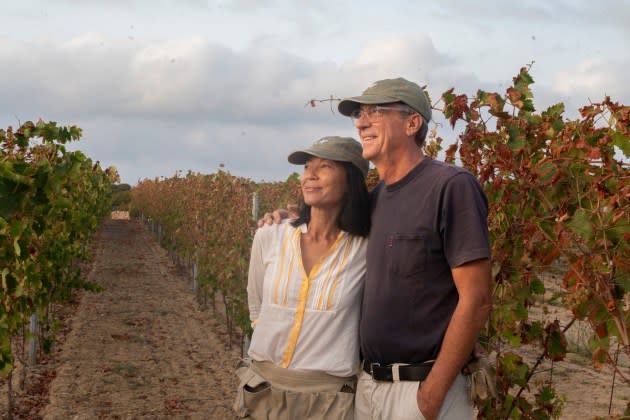
Owning a private island sounds exclusive and luxurious, but visiting Culuccia off the coast of Sardinia, Italy, is an experience that is much more unassuming — albeit treasurable and unique. Ostentation isn’t a word that can be associated with its owners, husband and wife Marco and Stella Boglione, whose goal is to protect the island’s natural environment and to live in sync with it rather than to seek secluded grandeur.
“What is luxury? It’s what gives you the most pleasure,” Marco Boglione says during a lunch at the island’s casual bar and restaurant overlooking a beautiful sandy beach cove, where a few lucky tourists are swimming in the impossibly blue Sardinian sea. The island isn’t fenced off, so that said lucky tourists can approach it, and the Bogliones have made it a priority to maintain its natural state.
More from WWD
New Book 'Marilyn Monroe Style' Looks at Her On-Screen Glamour and Off-Screen Simplicity
11 Beauty and Fashion Essentials Deserving of a Spot in Every 'Pilates Princess' Workout Bag
Remembering La Grenouille, a Magnet for the Ladies Who Lunch
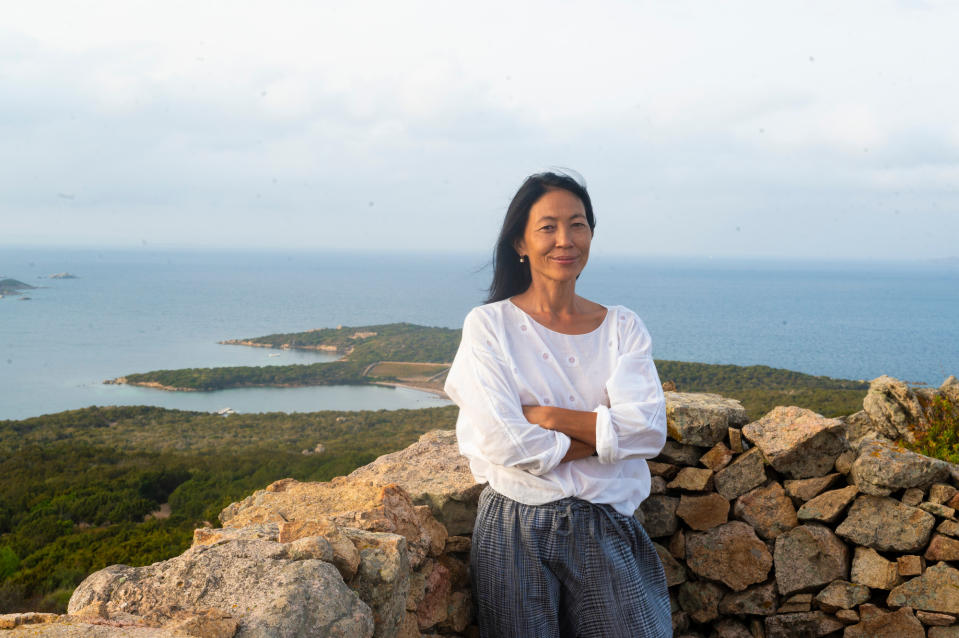
Boglione is the founder of Turin-based BasicNet Group, conceived in 1994 as a fashion marketplace and listed on the Milan Stock Exchange in 1999. It controls the Kappa, Robe di Kappa, Sebago, Jesus Jeans, Sabelt and Briko brands.
The entrepreneur bought the island in 2017 and recalls how at the time he was looking for “a new kind of lifestyle and a new passion” after developing BasicNet. “We saw some beautiful villas in Sardinia, and sure, there are many, but we were not attracted by that kind of luxury, simply owning a villa. All changed when we saw the more natural side of Sardinia,” he recalls.
The Island of Cows
At first, in 2012, Boglione bought almost 117 acres of land on Porto Pozzo, on the northern coast of Sardinia, growing a vineyard. But he was intrigued by Culuccia, positioned on the other side of his estate. Also known as the Island of Cows, it had been semi-deserted and abandoned for 35 years, during which time Mediterranean fauna covered most of the landscape.
“I never thought I would end up buying it, it seemed way too big,” says Boglione, explaining that it covers more than 741 acres. “But I kept being drawn to it.”
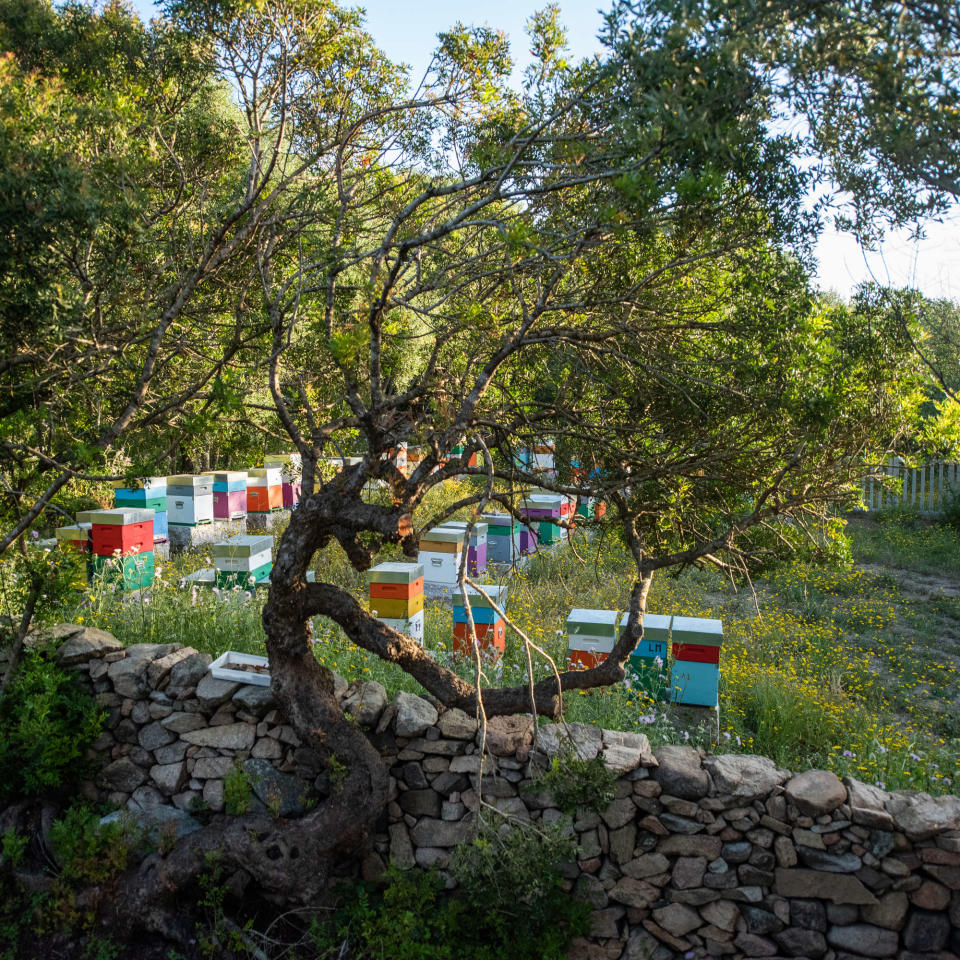
He credits Angelo Sanna, known as Ziu Agnuleddu, the island’s sole inhabitant from 1923 to 1996, for succeeding in 1985 in declaring it a zone of total environmental respect. Sanna lived on Culuccia with a dog and a mare, without running water or electricity, raising pigs, kids and cows.
“In the ‘60s, several investors tried to buy the island to create a complementary touristic site to the Costa Smeralda, but Sanna always refused all approaches,” Boglione says.
Having acquired the island, his first move was to reopen the old trails and unpaved roadways, which had been buried under the overgrown bushes and trees after years of depopulation. “To identify them, we used the aerial photos of the Allied Forces from the end of World War II positioned in Sardinia.”
The Bogliones’ dream was to give new life to the island, so they set up Biru Agricola, which produces agri-food of the highest quality while respecting nature, the landscape and the history of Culuccia.
“Buying Culuccia for me was equivalent to buying an artwork,” says Boglione, who adds he has “enormous respect for the territory” and has hired a biologist as a curator, founding a nature observatory on the island. Schools come to the island to observe its flora and fauna; there are still many turtles and the island is also a refuge for pink flamingos.
“It’s all word of mouth, we don’t do advertisement,” Boglione underscores.
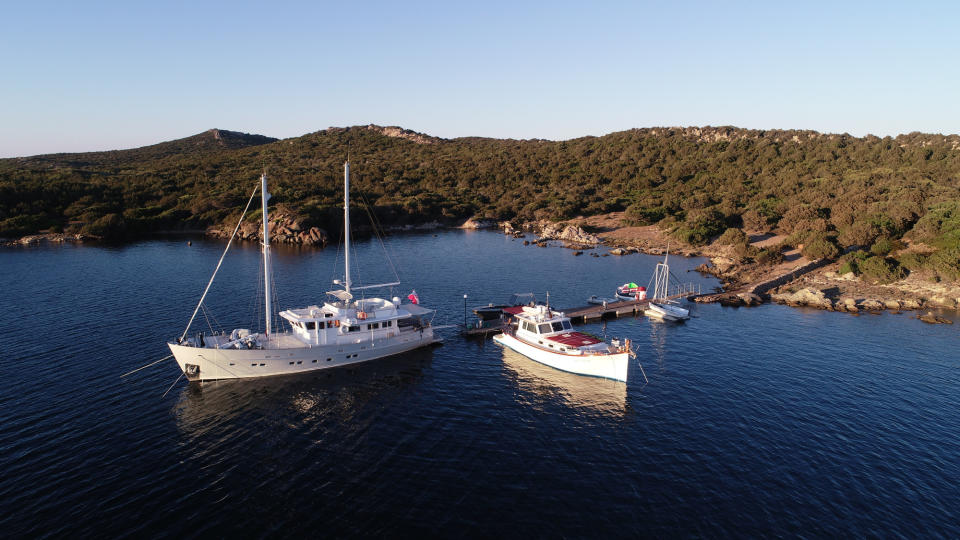
The Bogliones’ passion is obvious and their approach is hands-on. Touring the island with them, they know the cows and bulls by name, stop to pat and feed them and make sure the goats and the mules are all safe and well. “With Stella, we take evening strolls on the tracks just taking in the beauty of the island,” Marco says simply.
Their stazzo, one of the two local antique farmhouses on the island that they have restored, stands on a hill with a view that is breathtaking. “From Culuccia you can see the islands of Spargi, Budelli, Razzoli, Santa Maria and Maddalena, Cavallo and Corsica,” Marco ticks off, leaning on an antique dry stone wall, one of the many peppering the island that he proudly says are protected by UNESCO.
“What can be more luxury than nature?” he muses.
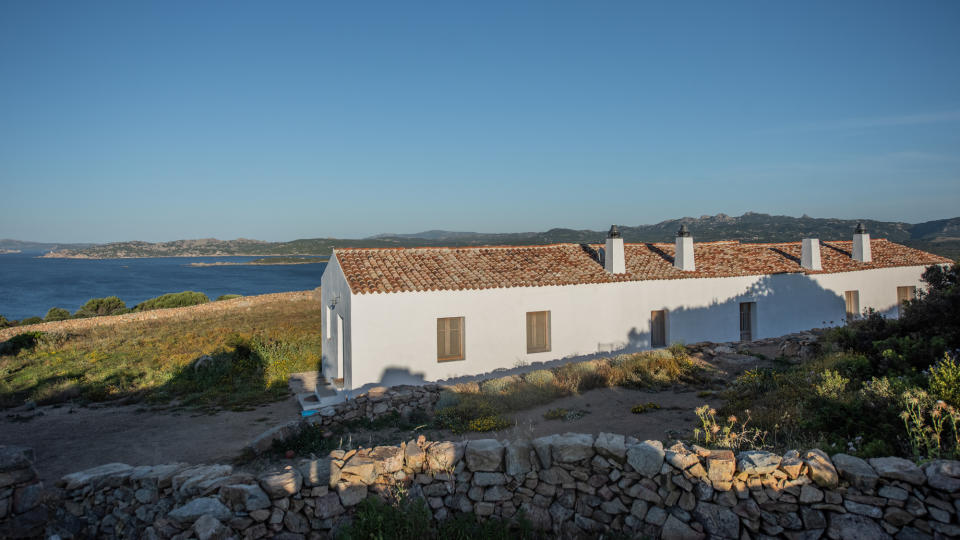
There is another stazzo on the island that has also been restored and that can be rented out. It’s welcoming and a refuge from the scorching sun, with its whitewashed walls, cool airy rooms and rustic furniture.
In contrast with the dry soil, the vegetable gardens and two vineyards add greenery, dramatically changing the landscape. There are also wild olive trees, holm oaks, and classic Mediterranean scrub with mastic, corbèzzolo, myrtle, cistus, broom and juniper.
Culuccia’s first harvest dates back to 2021 and Biru Agricola now produces around 4,000 bottles a year of Vermentino wine.
Oil, myrtle, gin and honey are also part of Culuccia’s production, and its oysters are recognized for their superior taste and quality.
Given his background, Boglione has also developed a line of apparel “to create and complete the Culuccia brand and world across the board,” he says, underscoring it is all made in Sardinia. Practical and inspired by the elegance and fabrics of the typical clothes of the Italian island, the apparel and accessories are in sync with the estate, ranging from overalls to cosy knits and practical outerwear, and made-to-order looks made by local tailors.
“All long-lasting and timeless, which is what people want now,” he points out.
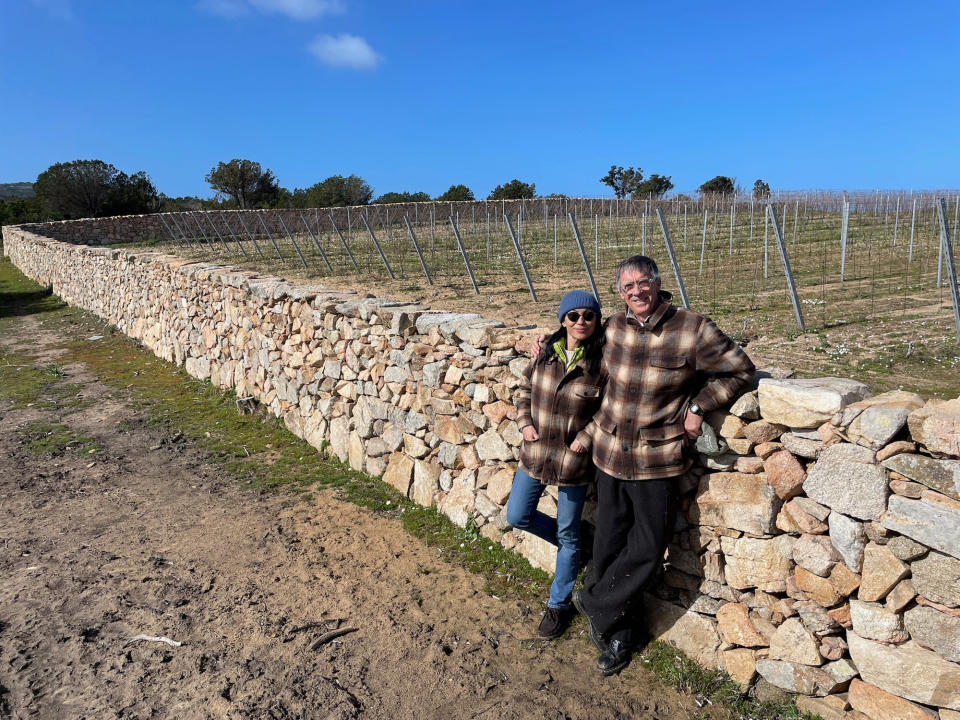
Best of WWD
Sign up for WWD's Newsletter. For the latest news, follow us on Facebook, Twitter, and Instagram.

 Yahoo Lifestyle
Yahoo Lifestyle 
